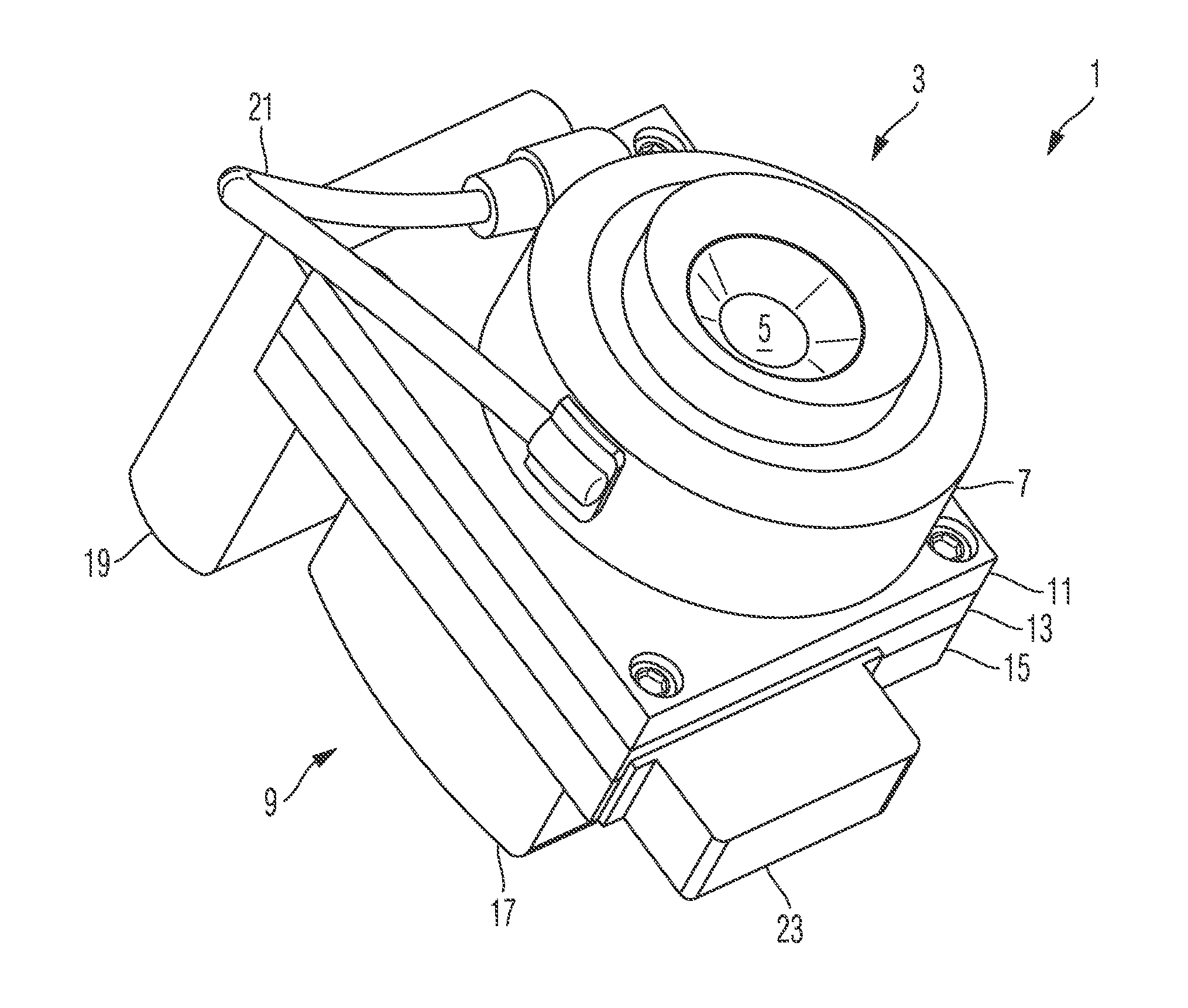Aerial digital camera and method of controlling the same
a technology of aerial digital camera and digital camera, which is applied in the field of aerial digital camera and to the method of controlling the same, can solve problems such as adversely affecting the accuracy, and achieve the effect of reducing blur in the recorded image and high number of repetition cycles of accurate sensor movemen
- Summary
- Abstract
- Description
- Claims
- Application Information
AI Technical Summary
Benefits of technology
Problems solved by technology
Method used
Image
Examples
Embodiment Construction
[0034]In the exemplary embodiments described below, components that are alike in function and structure are designated as far as possible by like reference numerals. Therefore, to understand the features of the individual components of a specific embodiment, the descriptions of other embodiments and of the summary of the invention should be referred to.
[0035]An exemplary embodiment of an aerial digital camera will be illustrated below with reference to FIGS. 1 to 7. FIG. 1 is a schematic perspective illustration of the camera 1. The camera comprises a lens 3 including a lens barrel, wherein a front lens 5 of the lens barrel is visible in FIG. 1. The lens 3 further includes a mechanical shutter positioned in an aperture plane of the lens barrel, wherein a housing of components of the shutter, such as blades and actuators of the shutter is indicated in FIG. 1 at 7.
[0036]The camera 1 further comprises a housing 9 comprising plural plates 11, 13, 15 and a cover 17. An electronic control...
PUM
| Property | Measurement | Unit |
|---|---|---|
| thickness | aaaaa | aaaaa |
| thickness | aaaaa | aaaaa |
| length | aaaaa | aaaaa |
Abstract
Description
Claims
Application Information
 Login to View More
Login to View More - R&D
- Intellectual Property
- Life Sciences
- Materials
- Tech Scout
- Unparalleled Data Quality
- Higher Quality Content
- 60% Fewer Hallucinations
Browse by: Latest US Patents, China's latest patents, Technical Efficacy Thesaurus, Application Domain, Technology Topic, Popular Technical Reports.
© 2025 PatSnap. All rights reserved.Legal|Privacy policy|Modern Slavery Act Transparency Statement|Sitemap|About US| Contact US: help@patsnap.com



